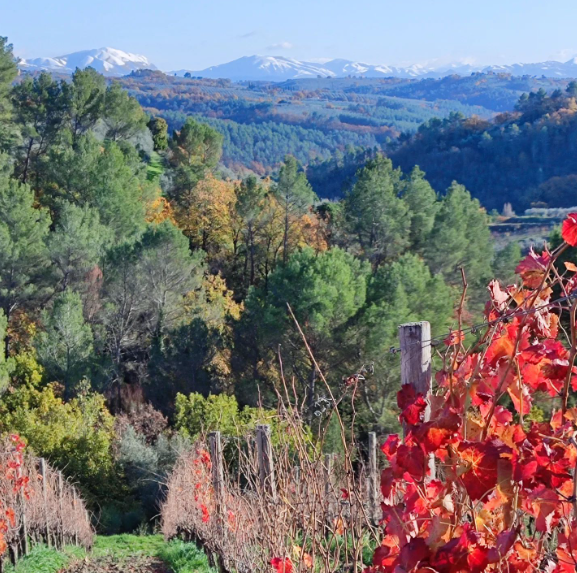Although the provenance of Sagrantino is debated, it is reputed to have originated in Greece and been brought to Italy by Byzantine Monks. Evidence of its cultivation in the Montefalco area dates to the Middle Ages. Almost all of the world’s Sagrantino is grown in Umbria, which has 600 hectares under vine. In the past, it was mainly used for religious ceremonies, hence the name “Sagrantino”, which stems from the Latin root word ‘sacer’, meaning sacred, holy or dedicated to a divinity. This thick-skinned, relatively disease-resistant grape needs hot days to fully ripen. It is appreciated for its intensity, richness and suitability for aging thanks to its high content of polyphenols. Sagrantino makes some of the world’s most structured wines and requires a deft hand to achieve elegance and drinkability.
Bordered by the better-known wine growing regions of Tuscany and Marche, Umbria has 13 different appellations and a slew of indigenous varieties. The region has hot, arid summers, rainy autumns and cool evenings throughout the growing season. The sub-appellation of Montefalco is one of the warmest in Umbria and its stony soils are laced with mineral deposits. Known as Italy’s “green heart”, winemaking has been conducted in the region for over 3000 years! The wines of Umbria — particularly Sagrantino di Montefalco — have great local exposure, especially in nearby Rome, but foreign markets have been slow to discover these structured, age-worthy beauties.

Peter Heilbron, a Milanese-born executive from the food and beverage industry, fell in love with the unique terroir of Montefalco, near Perugia and purchased a small, old vine vineyard on the slopes leading up to the Umbrian Appenine ranges. His property is planted to the indigenous Sagrantino and Trebbiano Spoletino grapes. The tough, stony soil is mixed with the area’s typical marl and arenaceous formations. Tenuta Bellafonte’s aim is to blend into the landscape, impacting the environment as little as possible. No chemical herbicides or pesticides are used in the vineyard and the underground cellar uses solar panels and a biomass boiler, greatly reducing environmental damage and waste; even the remains of pruning are used to produce energy. Winemaking is done with minimal intervention, utilizing indigenous yeasts for spontaneous fermentation. The wines are bottled un-fined and unfiltered.
2018 Tenuta Bellafonte Montefalco Sagrantino ‘Collenottolo’
Umbria, Italy - $58
Gambero Rosso 3 Bicchieri

Only 120 bottles were released in conjunction with the LCBO’s Gambero Rosso Tre Bicchieri event. Gambero Rosso is Italy’s foremost wine journal; wines awarded Tre Bicchieri (3 Glasses) represent the country’s top bottles each year.
Organically-farmed grapes were hand-sourced from old, estate vineyards that coexist amongst 2,500 olive trees. Only the ripest bunches were chosen, de-stemmed and fermented via wild yeasts in tank. After a long, cool ferment, the wine was transferred to huge Slavonian oak barrels for malolactic conversion and 36 months of aging. The wine was bottled without filtration, where it further refined for 2 years before release.
Big, structured and dense, yet surprisingly elegant. Ripe aromas of blackberry, cassis, tomato leaf and mocha. The palate is full and firm, with a tannic backbone and seam of fine acidity that keeps it balanced. Flavours of black fruits, mocha, licorice, anise, pipe tobacco and olive. The long, black cherry finish has enough freshness to stop this hulking wine from being too ponderous. It screams for red meat to help manage the tannins or some aeration if enjoyed it on its own. This cellar starter can be savoured now or laid down to slumber for decades.

